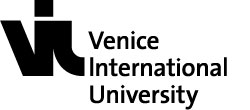S2206 Gender Studies: Gender, Sexuality and Society
Professors
Schedule
Course description
The course will examine issues related to gender and sexuality in today’s society, particularly in India. Gender inequality has always been a significant social issue in India. The birth of a girl child is still treated as a burden. Discrimination against girls exists in every part of the subcontinent and killing foetuses and infant girls is very common in Indian society. This makes the child sex ratio highly imbalanced all over: for every 1000 boys in India, there are only 908 girls. Patriarchal society sees women as inferior to men. The course will discuss various aspects of studying gender, society, social class and caste, identity, and gender as a structuring feature of discourse and institutions. Although many issues will be discussed, this course is organized analytically and thematically. There are several main themes – beliefs in the naturalness and timelessness of gender, sociological theories of gender, social constructions of gender – how parents raise their children, and patterns of gender inequality in terms of caste, class, and religion.
Learning outcomes
This course aims to give the students an idea of the existing socialization pattern with which they may be unfamiliar. Students will learn about the functions of the institutions and the inequalities in society. The course examines gender issues at societal and global levels. It discusses sociological concepts and theories applicable to gender and sexuality, and issues involving gender that are currently evolving in and across diverse societies. Students will be encouraged to think critically and write analytically about another culture, which will help them to become better global citizens.
Teaching method
The course will be taught through a combination of lectures, discussions and presentations
Syllabus
1:Orientation:
Course orientation, demographic profiling, understanding demographic indicators globally related to gender, literacy, life expectancy, maternal mortality rates, infant mortality rates, work participation rates.
2:Gender and social construction
Gender discrimination and gender stereotyping
3:Inequality and Social Structure I
Gender inequality in terms of casts, class and religion
4:Inequality and Social Structure II
What is "patriarchy"?
Violence against women, Child Marriage
5:Inequality and Social Structure III
Beti Bachao (Save our Daughters), widowhood and domestic violence
6:Inequality and Social Structure IV
Problems of elderly and single women
Who is at the forefront of social change?
7. Midterm Assessment and Definitions of Globalization
[MIDTERM BREAK]
8:Culture, Ideology and Society I
Family and kinship, Joint and Nuclear families – monogamy, polygamy and polyandry,
9:Culture, Ideology and Discourse II
Multiple Roles, Gender role conflict and Education: Conflicted gender roles
10:Culture, Ideology and Discourse III
Minority women –victims of violence: Devdasi
11:Culture, Ideology and Discourse III
Minority women –victims of violence: Devdasi and Dalit Women
12:Culture, Ideology and Discourse IV
Dalit women and their social rights
13: Exam Week
Work to be done outside of class (preparation, etc.)
30-60 minutes homework is required for each class. Students are expected to review materials after each class, keep up with the readings, complete the assignments and prepare for discussions and presentations.
Evaluation method
Presentation: 20%
Paper: 40%
In-class/take-home exam Mid-term Assessment: 30%
Attendance and class participation: 10%
Bibliography
Handouts, readings and other materials will be distributed in class
AHUJA, RAM, (1993/2002), Indian Social System, Rawat, Jaipur.
BEASLEY, COLE, (2005), Gender and Sexuality: Critical theories, critical thinkers, thousand Oaks, Calif.: Sage Publications.
BRAITHWAITE, A., & ORR, C. M., (2017). Everyday Women's and Gender Studies: Introductory concepts, New York: Routledge.
CENSUS DOCUMENT KARVE, Irawati 1961: Hindu Society: An Interpretation Poona, Deccan College.
CONNELL, R., & PEARSE, R. (2015), Gender in World Perspective (3 ed.), Cambridge & Malden, MA: Polity Press.
EVANS, M., & WILLIAMS, C. H. (Eds.), (2013), Gender: The key concepts (Vol. Routledge): Oxon & New York.
JACKSON, S., & RAHMAN, M. (2010), Gender & Sexuality: Sociological approaches, Cambridge & Malden, MA: Polity Press.
JACKSON, S., & SCOTT, S. (Eds.), (2002), Gender: A sociological reader, London & New York: Routledge.
KENSCHAFT, L., CLARK, R., & CIAMBRONE, D. (2016), Gender inequality in our changing world: A comparative approach, New York & Oxon: Routledge.
RICHARDSON, D., & MONRO, S. (2012), Sexuality, Equality and Diversity, London: Palgrave MacMillan.
MOHANTY, MANORANJAN, (eds), Class, Caste, Gender, Sage, New Delhi, 2004.
REGE, SHARMILA (ed), Sociology of Gender: The Challenge of Feminist Sociological Knowledge, Sage, New Delhi, 2003.
SINGH, Indu Prakash, Indian Women: The Power Trapped, Galaxy Pub, New Delhi, 1991.




















